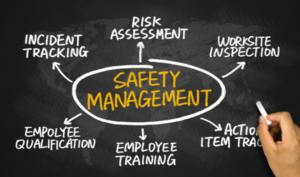Table of Contents
Employers are responsible for complying with the state’s workplace and health laws. Organisations that fail to adhere to safety orders and standards can experience pricey penalties for noncompliance. Businesses in all industries are exposed to various safety hazards, particular to their specific. However, some risks exist only across your sector and leave you vulnerable to workers’ compensation claims if you don’t prevent them from triggering accidents. Your employees are your greatest asset, and it’s crucial to create a safe environment to protect them and minimise the negative effects an accident can have on your bottom line. However, even if you take the correct workplace measures and precautions to prevent accidents and injuries from happening. Sometimes they’re inevitable. But the way you prepare for and respond to them can make the difference in getting the best possible outcome.
Workplace Injury Statistics

RIDDOR data reveals that there were 69,208 company reported non-fatal workplace injuries to workers in the UK in the 2018/2019 reporting year. However, the Labour Force Survey reports 581,000 self-reported injuries, meaning that there were 650,208 injuries during the mentioned period. 74% of all injuries incapacitated the employees for more than 7 days even if the number of workplace injuries has declined from the previous years.
The most common instances leading to workplace accidents happen when workers carry, lift, or handle something. Here is a list of the most common kinds of non-fatal workplace injuries.
- Injured while handling, lifting or carrying
- Slipped, fell or tripped on the same level
- Hit by a falling, flying or moving object
- Physically assaulted by a person
- Contact with moving machinery
- Fell from a height
- Hit something stationary or fixed
- Injured by an animal
Indirect costs of workplace injuries

If you deal with a workplace accident, its indirect costs can run from 4 to 10 times the amount of the direct costs. Whether it’s a worker slipping, an auto accident in a company vehicle, or another kind of accident, your business loses one of its most important assets, the worker. Workplace injuries cause indirect losses like loss of business, compensating injured employees, training replacement workers, lost productivity, and administrative time to process the needed paperwork.
When one of your employees isn’t able to work, your business’ productivity declines. The other workers need to assume additional responsibilities that can have a negative impact on their focus on their tasks. If your worker is incapacitated for a more extended period, you need to hire and train a new employee, which can turn time-consuming and expensive. The type of training the replacement employee needs impacts the costs. On the job training where the replacement worker learns as they go is more affordable than lengthy induction training. Besides paying an extra worker, you also spend money covering training staff’ salaries.
Direct costs of workplace injuries
The importance of complying with workplace safety regulations is significant because the consequences to do it can be extensive.
Fines
Complying with the state’s safety laws is essential because you can get penalised for noncompliance. Besides paying fines, you can also deal with significant criminal penalties as an employer.
Medical compensation

The employees who get injured at a healthy workplace can collect compensation benefits while they recuperate. Even if most times the claim process is straightforward, you still have to follow specific guidelines to determine if their injury or illness qualifies for compensation. If your workers believe you didn’t create a safe work environment setting, they can hire a solicitor to help them file a claim and support them in the process. With platforms like ReviewOfSolicitors easily accessible, your employees have no issue finding a personal injury lawyer to handle their case.
Fatal workplace injuries and death benefits
Losing an income earner is overwhelming for a family. When the death of an employee would not have occurred but for the workplace accident, their surviving family members can claim compensation benefits to help them deal with financial stability.
Legal services expenses
Legal services are costly, especially if you need to work with a lawyer during a suit.
How to create a successful safety management program?

The best companies prioritise employee health and safety and make it a shared responsibility. You can follow their example and do it strategically, enabling you to effectively practice prevention and providing you with the needed tools to handle incidents.
Here are some essential components of an effective safety management program.
- Formalised safety policies that show your business’ position on the importance of safety management and the expectations from each worker as to how they need to react in given scenarios. The policies should include essential operating data for workers to embrace and follow during their working days.
- Regular communication about health and safety should be accessible to all workers. It’s wise to remind workers they need to make safety a priority over productivity. Consistent messaging about health and safety can create accountable, productive, and loyal workers who feel valued and respected by your business.
- Support for behaviour-based safety encourages safety improvement through habit creation. Often, activity has been done the wrong way for a long time and your employees aren’t conscious they put themselves in danger. Create good behaviour by encouraging them to develop positive behaviour.
- Utilising lagging and leading indicators allows you to develop a systematic method to measure how the overall safety operations function. It’s essential to understand easily and quickly if something goes wrong and puts your employees at risk. Use lagging indicators to measure what happened in the past regarding workers injury frequency or lost workdays.
- Top-notch systems and tools can help you lower the frequency of workplace accidents. Use technology to your advantage to keep your employees prepared and ready to handle any situation. The best safety management program equips your employees to access data when they need to report a problem quickly.
Remember that the commitment to establishing a safe working environment and a healthy culture is never-ending but essential because it helps you keep your business afloat.
Author Profile

- Blogger by Passion | Contributor to many Business Blogs in the United Kingdom | Fascinated to Write Blogs in Business & Startup Niches |
Latest entries
 Home & LivingJuly 12, 2025Shared Planning for a Stronger Future
Home & LivingJuly 12, 2025Shared Planning for a Stronger Future BusinessJuly 4, 2025How To Build an Integrated Development Plan That Works?
BusinessJuly 4, 2025How To Build an Integrated Development Plan That Works? BusinessJuly 1, 2025Investing in Commercial Property: Key Considerations for Business Owners
BusinessJuly 1, 2025Investing in Commercial Property: Key Considerations for Business Owners Social MediaJuly 1, 2025TikTok AI Dance Revolution: Top Trends, Earnings & How to Go Viral
Social MediaJuly 1, 2025TikTok AI Dance Revolution: Top Trends, Earnings & How to Go Viral





